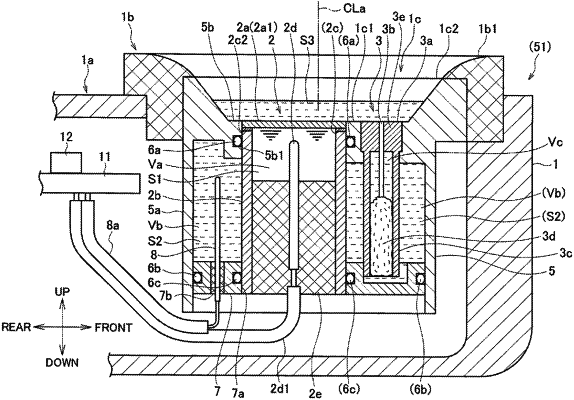| CPC G01N 27/36 (2013.01) [G01N 27/302 (2013.01)] | 4 Claims |

|
1. A liquid property measurement device comprising:
a glass electrode including a flat sensitive glass body sensitive to ions, a base body formed of a glass tube housing an internal solution, and a fixation layer used to sealingly attach the sensitive glass body to an end surface of the base body; and
a processing circuit in communication with the glass electrode and configured to perform processing comprising:
correcting a cation concentration of a test solution obtained based on a potential of the glass electrode by using a correction value based on resistance values of the sensitive glass body and the fixation layer and output the corrected cation concentration as a measurement value, wherein
the liquid property measurement device is configured to measure the cation concentration of the test solution,
wherein the sensitive glass body is attached on the end surface of the base body such that a surface of the sensitive glass body is exposed to the internal solution,
wherein the surface of the sensitive glass body that is exposed to the internal solution is sensitive to the ions,
wherein the sensitive glass body and the base body are separated by the fixation layer which is formed from a low-temperature sintered glass paste arranged entirely between faces of the sensitive glass body and the end surface of the base body, and
wherein the faces face in a direction toward each other and with the fixation layer interposed therebetween the faces.
|